Filing income tax returns is one of the most important financial responsibilities for individuals in India. Whether you are salaried, self-employed, a pensioner, or an investor, you must submit your annual income tax return (ITR) to the Income Tax Department of India to stay compliant with tax laws. The first step toward filing your ITR successfully is gathering all the relevant documents. This guide will walk you through what documents are required for income tax filing in India, especially if you’re doing it for the first time. From salary proofs to investment documents, every category is explained in detail to help you file your taxes accurately and efficiently.
Understanding the Process of Filing Income Tax in India
The process of filing an income tax return involves declaring your total annual income from various sources, calculating the tax payable, claiming applicable deductions, and then submitting this information to the tax department through the official e-filing portal. The financial year in India runs from April 1 to March 31, and the corresponding assessment year is the year in which you file your return. For example, income earned between April 2024 and March 2025 will be assessed in the financial year 2025–26. For most individual taxpayers, the deadline to file returns is usually July 31 unless extended by the government. Filing within this time is important to avoid penalties and interest charges.
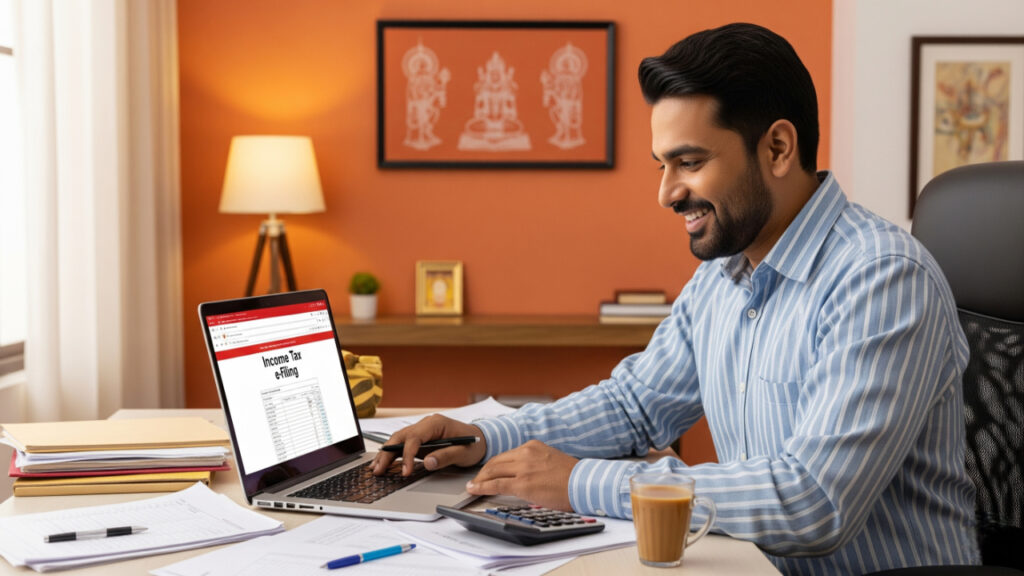
Importance of Document Preparation Before Filing
Before beginning your ITR filing, collecting and organizing your financial documents is essential. These documents serve as the basis for accurately reporting income, claiming deductions, and computing tax liabilities. Having them in place minimizes errors, avoids discrepancies with government records, and helps you respond to any future queries from the tax department. Moreover, these documents act as proof in case of audits and verifications. Whether you’re using a CA or filing yourself online, a complete set of documents ensures the process is smooth and hassle-free.
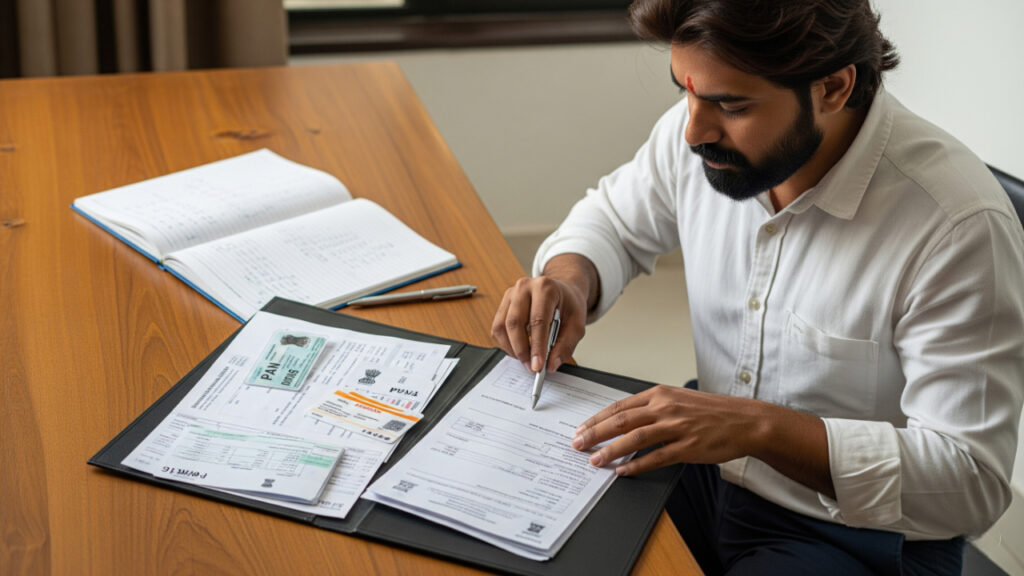
PAN and Aadhaar – Mandatory Identity Proofs
Your PAN (Permanent Account Number) is the core identification for all income tax-related activities in India. Issued by the Income Tax Department, your PAN must be quoted in your tax return. Equally important is your Aadhaar number, which must be linked to your PAN to successfully file returns. The government has made it mandatory to link PAN with Aadhaar to eliminate duplicate PANs and improve the accuracy of income tracking. If your PAN and Aadhaar are not linked or if there is a mismatch in personal details, your return might get rejected or considered invalid.

Form 16 – Crucial for Salaried Employees
Form 16 is perhaps the most important document for salaried individuals. It is issued annually by your employer and summarizes your income, deductions, and the amount of Tax Deducted at Source (TDS). Form 16 consists of two parts: Part A contains details of the employer and the employee along with TDS information, while Part B provides a breakdown of your salary, exemptions, and deductions under sections like 80C, 80D, etc. You must review this document carefully for errors and ensure it aligns with your salary slips and bank credits. It simplifies filing by providing much of the required financial data in a structured format.
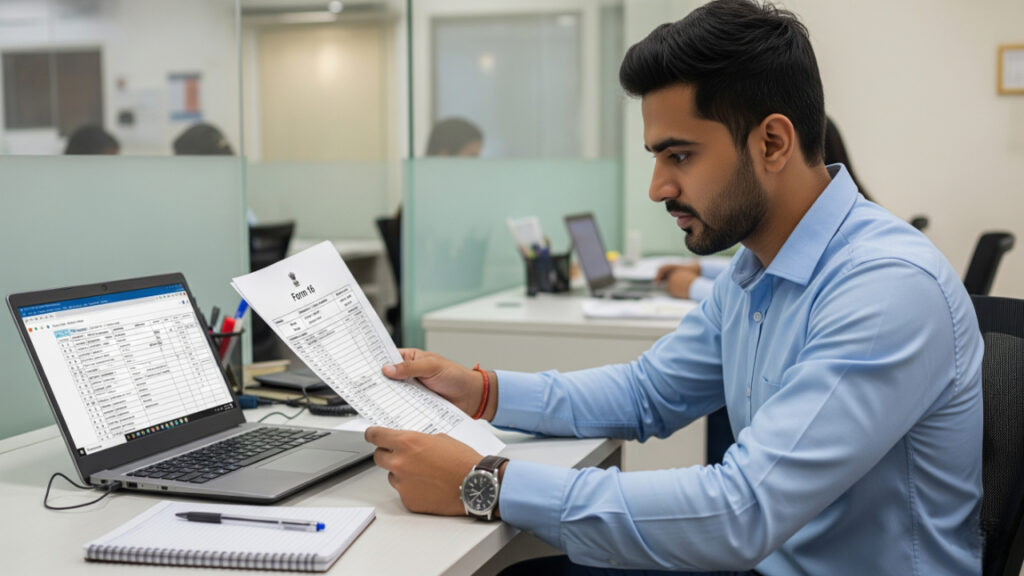
Form 26AS – Your Annual Tax Statement
Another important document is Form 26AS, which is your annual tax credit statement. This form is maintained by the Income Tax Department and includes details about taxes deducted on your behalf by employers, banks, or other institutions. It also shows any advance tax or self-assessment tax payments made by you. This form is crucial to verify that the tax deducted from your income has been correctly deposited with the government. You can access Form 26AS online via the e-filing portal or through your net banking account if it’s linked to your PAN.

Bank Statements and Salary Slips
You should collect your salary slips for the financial year along with bank account statements. Salary slips help validate the monthly breakup of your income including basic salary, HRA, and other allowances. They are especially useful when your employer hasn’t issued Form 16. On the other hand, bank statements help in identifying and reporting other sources of income such as savings interest, dividend income, or pension credits. Most banks allow you to download statements in PDF format for a custom date range. Keeping a copy of these will help you reconcile income amounts while filling in your ITR form.
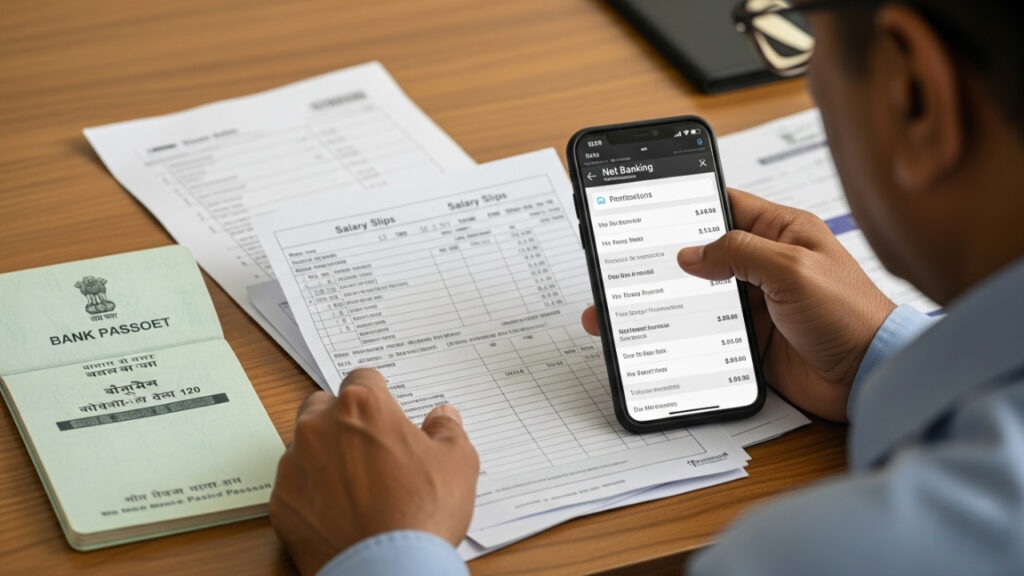
Investment Proofs for Tax Deductions
If you have invested in tax-saving schemes, then collecting and organizing the relevant documents is essential. For instance, premiums paid towards life insurance policies, contributions to Public Provident Fund (PPF), Equity Linked Savings Scheme (ELSS) mutual funds, or 5-year fixed deposits all qualify for deductions under Section 80C. Similarly, receipts for health insurance premiums (Section 80D), education loan interest payments (Section 80E), and donations (Section 80G) must be preserved to claim their respective deductions. Without valid documentary proof, these deductions will not be allowed.
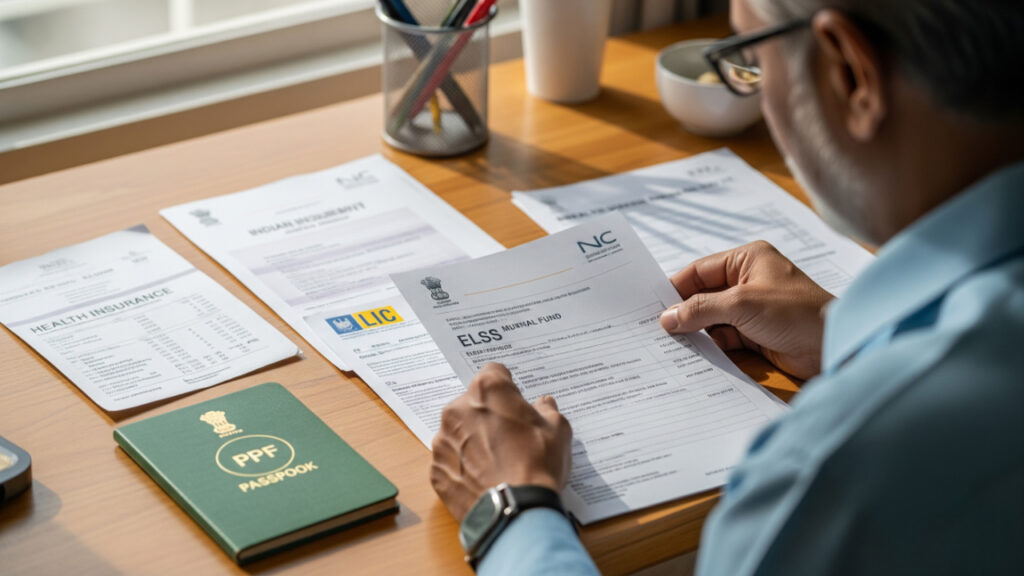
House Rent Receipts and Rental Agreements
For those living in rented homes and receiving HRA from their employer, submitting rent receipts is essential to claim HRA exemption. Rent receipts should ideally include the landlord’s name, rent amount, address of the rented property, and duration of stay. If your annual rent exceeds ₹1,00,000, you must also obtain your landlord’s PAN number and include it in your documentation. Additionally, a rent agreement serves as a supporting document to validate your claim. In cases where you are earning rental income, retain copies of lease agreements, rent receipts issued to tenants, and municipal tax payments made.

Capital Gains and Investment Transactions
If you have bought or sold property, mutual funds, or stocks, you must declare any capital gains or losses from these transactions. The capital gains statement from your Demat account or mutual fund houses will show the gains/losses realized during the financial year. These statements are typically provided at the end of the financial year and break down short-term and long-term gains. For property transactions, you will also need the purchase deed, sale deed, and details of registration charges and improvement expenses. If capital gains apply, you may also need to calculate indexation benefits using cost inflation index charts.

Income from Freelance or Business Work
If you are a freelancer, consultant, or run your own business, the income earned outside salaried employment must be declared. Maintain invoices, receipts, and payment confirmation for all work done during the year. It is advisable to use accounting software or maintain a spreadsheet to record each transaction. You should also preserve bills and receipts for business-related expenses like software tools, travel, internet charges, and equipment purchases as they can be deducted as business expenses. Bank account statements of business accounts can serve as supporting documents to verify both income and expenses.

Other Income Sources and Tax Receipts
Do not forget to account for income from other sources such as savings account interest, recurring deposits, pension, lottery winnings, or agricultural income. You should gather passbooks, fixed deposit interest certificates (Form 16A), and pension statements. In case you have paid advance tax or self-assessment tax during the year, download the challan receipts from the income tax payment portal and store them. These will help you ensure that you are not taxed again on the same amount while filing returns.
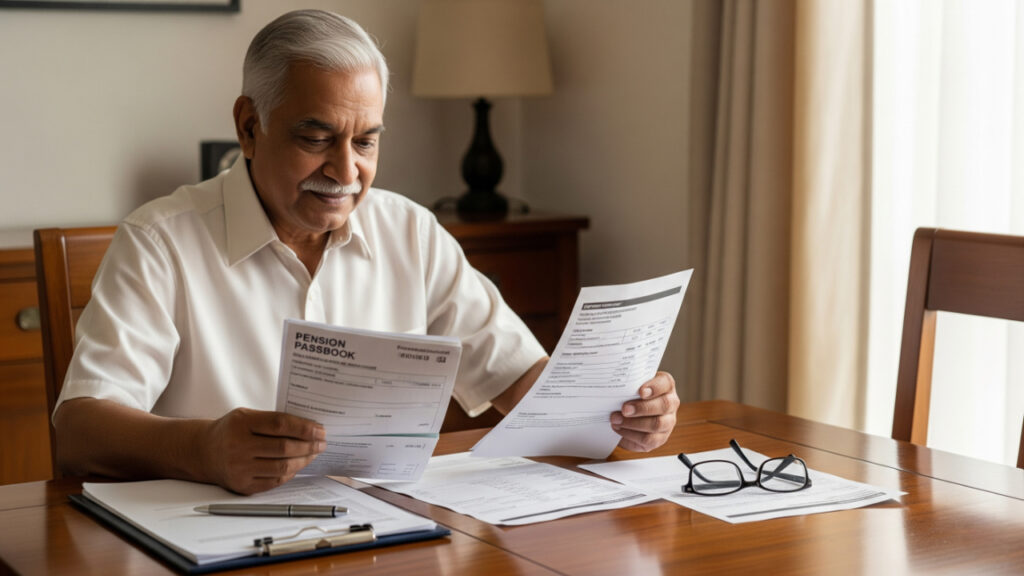
Conclusion
Understanding what documents are required for income tax filing in India can greatly reduce the complexity and stress often associated with tax season. By collecting your PAN, Aadhaar, Form 16, Form 26AS, bank statements, investment proofs, rent receipts, capital gains statements, and freelance income records in advance, you’re preparing for a smoother, more accurate filing process. The digitization of tax filing has made it much easier, but accuracy and proper documentation remain key. Ensure all figures match across forms, and seek professional help if you’re unsure about any section of your return.
FAQs
Q1: What is the most important document for salaried employees when filing ITR?
A: Form 16 is the most important, as it contains income and TDS details provided by your employer.
Q2: Is Aadhaar mandatory for filing income tax returns in India?
A: Yes, Aadhaar must be linked with your PAN to file ITR successfully.
Q3: Where can I download Form 26AS?
A: You can download Form 26AS from the Income Tax e-Filing Portal or via net banking.
Q4: What documents are needed to claim deductions under Section 80C?
A: Documents such as PPF passbooks, ELSS statements, life insurance premium receipts, and 5-year FD certificates are required.
Q5: Do I need to include income from savings account interest while filing taxes?
A: Yes, and you can claim exemption up to ₹10,000 under Section 80TTA for savings interest.
Q6: What is the purpose of capital gains statements?
A: They are needed to report profits or losses from selling shares, mutual funds, or real estate.
Q7: Are rent receipts necessary for HRA claims?
A: Yes, especially if your rent exceeds ₹1 lakh annually, you also need your landlord’s PAN.
Q8: What should freelancers keep as income proof?
A: Freelancers should maintain invoices, receipts, payment confirmations, and bank statements.
Q9: How can I prove I paid advance tax or self-assessment tax?
A: Retain the tax payment challans and receipts generated from the tax payment portal.
Q10: What happens if my Form 16 and Form 26AS have mismatched data?
A: You should contact your employer or deductor to correct the data before filing to avoid notices.

